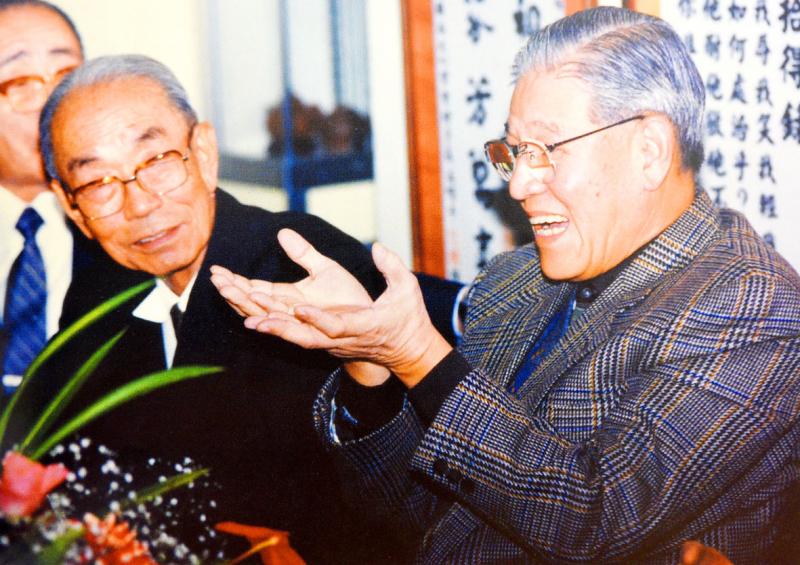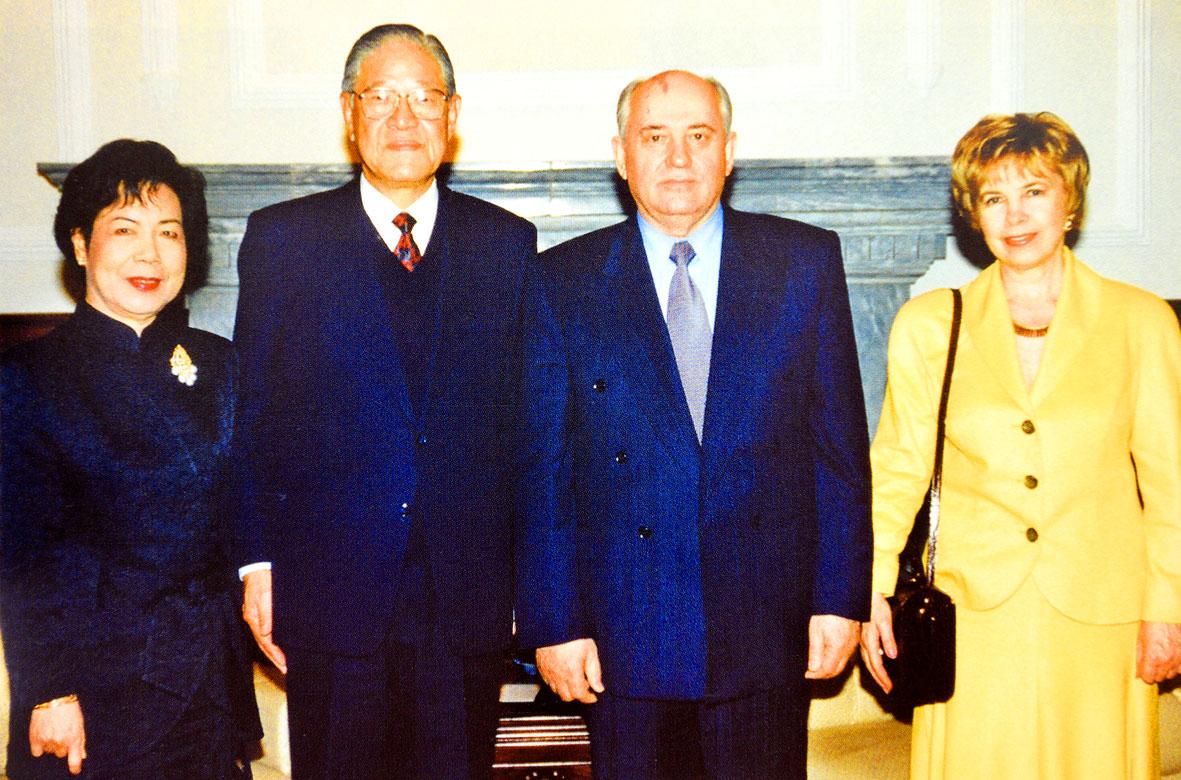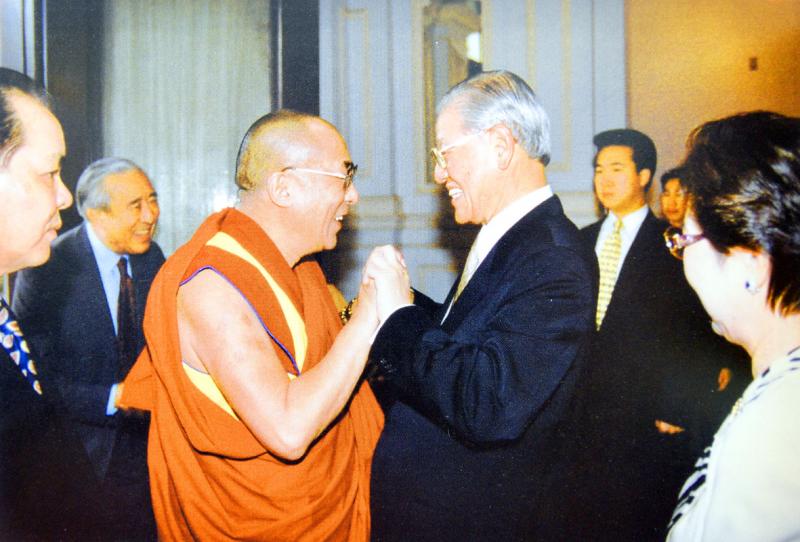Lee Teng-hui (李登輝), who was born on Jan. 15, 1923, in the farming community of Sanshi Village, Taihoku Prefecture — now New Taipei City’s Sanzhi District (三芝) — during the Japanese colonial era, and rose to become mayor of Taipei and not only the Republic of China’s (ROC) first Taiwan-born president, but its first directly elected one as well.
Educated in the Japanese educational system of the time, Lee, who spoke Japanese, Hoklo (also known as Taiwanese), Mandarin and English, won a scholarship to Kyoto Imperial University, but his studies were interrupted by World War II.
He earned a bachelor’s degree in agricultural science from National Taiwan University (NTU) in 1948, and appeared headed for an academic or civil service career, going on to earn a master’s degree from Iowa State University in 1953 and a doctorate from Cornell University in 1968.

Photo courtesy of Academia Historica
He worked for the US-sponsored Joint Commission on Rural Reconstruction and also taught at NTU and National Chengchi University.
After joining the Chinese Nationalist Party (KMT) in 1971, the following year he gained his first government appointment, as a minister without portfolio with responsibility for agriculture.
He served in that position until June 1978, when he was appointed mayor of Taipei, a post he held until December 1981, when he became governor of the then-Taiwan Provincial Government, serving until 1984, when he became vice president of the ROC.

Photo courtesy of Academia Historica
He succeeded president Chiang Ching-kuo (蔣經國), who died on Jan. 13, 1988, although the move was opposed by many Mainlanders within the KMT, including Chiang Kai-shek’s widow, Soong Mayling (宋美齡), who returned from the US to help other conservative Mainlanders to sideline Lee as president and block his accession to the KMT chairmanship.
However, Lee was deft enough to secure enough support to stay in office.
In 1991, he ended the Period of National Mobilization against Communist Rebellion and pushed for the re-election of the “1,000 year” National Assembly and the Legislative Yuan, whose members had served since 1948.

Photo courtesy of Academia Historica
He also oversaw a major reshuffle of the Executive Yuan.
In 1995, he became the first ROC president to publicly apologize for the 228 Incident, and also made waves by returning to Cornell University to deliver a speech.
The following year he became the first directly elected president after the Third Addition to the Constitution established that the nation’s president and vice president should be directly elected.

Photo courtesy of Academia Historica
His unparalleled contributions to democratizing the nation and his election that year earned him the nickname “Mr Democracy” from Newsweek magazine.
During his time as president and as KMT leader he favored highlighting Taiwan’s sovereignty and right to self-determination, and also pushed his special state-to-state model of cross-strait relations.
His relationship with the Democratic Progressive Party was highlighted by both rivalry and camaraderie, which is perhaps best exemplified by his collaboration with then-DPP chairman Hsu Hsin-liang (許信良) to freeze the Taiwan Provincial Government in 1997.
He was blamed by many hardliners in the KMT for the party’s loss of the presidency in 2000 to the DPP’s Chen Shui-bian (陳水扁), which eventually led to his being expelled from the party.
In 2004, Lee supported Chen’s re-election and in 2012 and 2016 stumped for Tsai Ing-wen (蔡英文) in her bids to become president.
Today, members of the DPP and pro-independence advocates see Lee as a visionary on the nation’s path to democracy and its efforts to achieve self-determination.
Democracy advocate Peng Ming-min (彭明敏), 96, said there were two contradictory identities in Lee — one was his status as a Taiwanese and the other was his position as KMT chairman.
The last time he saw Lee was at the founding of the Formosa Alliance in Kaohsiung, Peng said.
Lee made great contributions during Taiwan’s period of economic, political, cultural and social transformation, Peng said, adding that he believes Lee will always have an important position in Taiwan’s history.
Additional reporting by Lee Hsin-fang and Diane Baker
This story has been corrected since it was first published.

The US government has signed defense cooperation agreements with Japan and the Philippines to boost the deterrence capabilities of countries in the first island chain, a report by the National Security Bureau (NSB) showed. The main countries on the first island chain include the two nations and Taiwan. The bureau is to present the report at a meeting of the legislature’s Foreign Affairs and National Defense Committee tomorrow. The US military has deployed Typhon missile systems to Japan’s Yamaguchi Prefecture and Zambales province in the Philippines during their joint military exercises. It has also installed NMESIS anti-ship systems in Japan’s Okinawa

‘WIN-WIN’: The Philippines, and central and eastern European countries are important potential drone cooperation partners, Minister of Foreign Affairs Lin Chia-lung said Minister of Foreign Affairs Lin Chia-lung (林佳龍) in an interview published yesterday confirmed that there are joint ventures between Taiwan and Poland in the drone industry. Lin made the remark in an exclusive interview with the Chinese-language Liberty Times (the Taipei Times’ sister paper). The government-backed Taiwan Excellence Drone International Business Opportunities Alliance and the Polish Chamber of Unmanned Systems on Wednesday last week signed a memorandum of understanding in Poland to develop a “non-China” supply chain for drones and work together on key technologies. Asked if Taiwan prioritized Poland among central and eastern European countries in drone collaboration, Lin

Renewed border fighting between Thailand and Cambodia showed no signs of abating yesterday, leaving hundreds of thousands of displaced people in both countries living in strained conditions as more flooded into temporary shelters. Reporters on the Thai side of the border heard sounds of outgoing, indirect fire yesterday. About 400,000 people have been evacuated from affected areas in Thailand and about 700 schools closed while fighting was ongoing in four border provinces, said Thai Rear Admiral Surasant Kongsiri, a spokesman for the military. Cambodia evacuated more than 127,000 villagers and closed hundreds of schools, the Thai Ministry of Defense said. Thailand’s military announced that

NO CONFIDENCE MOTION? The premier said that being toppled by the legislature for defending the Constitution would be a democratic badge of honor for him Premier Cho Jung-tai (卓榮泰) yesterday announced that the Cabinet would not countersign the amendments to the local revenue-sharing law passed by the Legislative Yuan last month. Cho said the decision not to countersign the amendments to the Act Governing the Allocation of Government Revenues and Expenditures (財政收支劃分法) was made in accordance with the Constitution. “The decision aims to safeguard our Constitution,” he said. The Constitution stipulates the president shall, in accordance with law, promulgate laws and issue mandates with the countersignature of the head of the Executive Yuan, or with the countersignatures of both the head of the Executive Yuan and ministers or